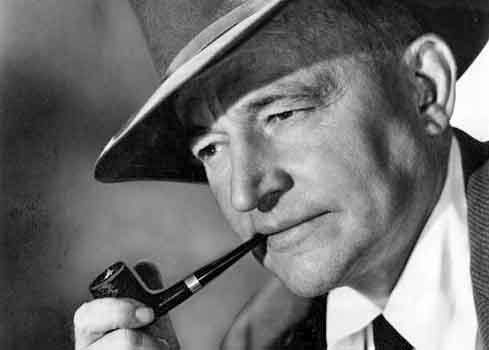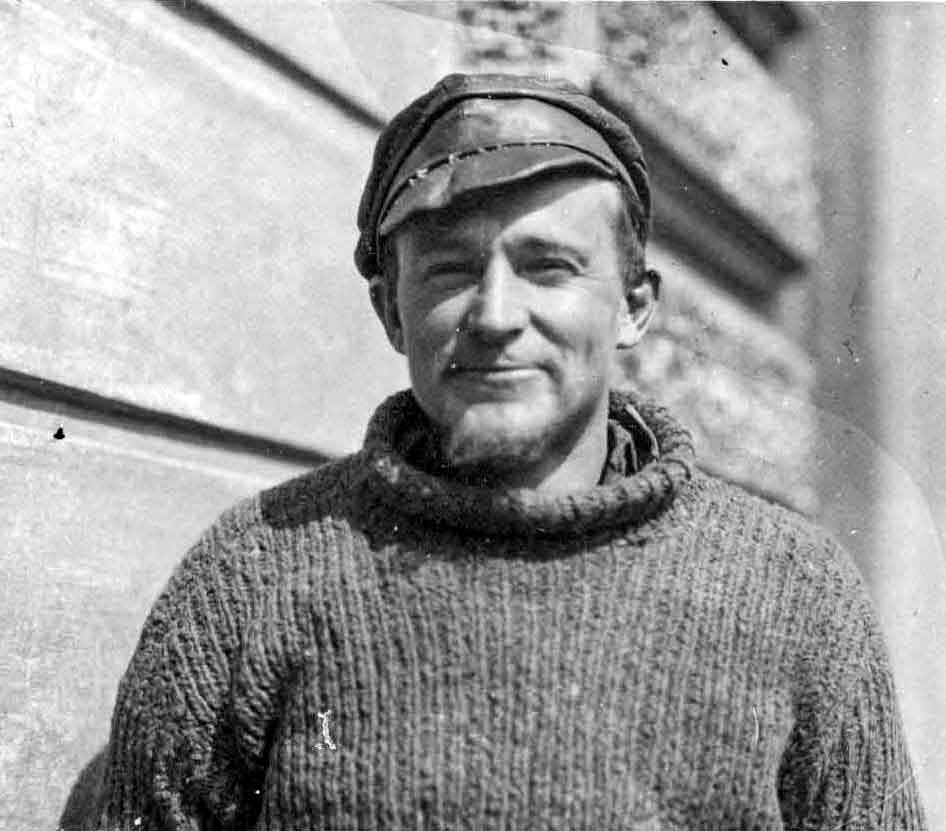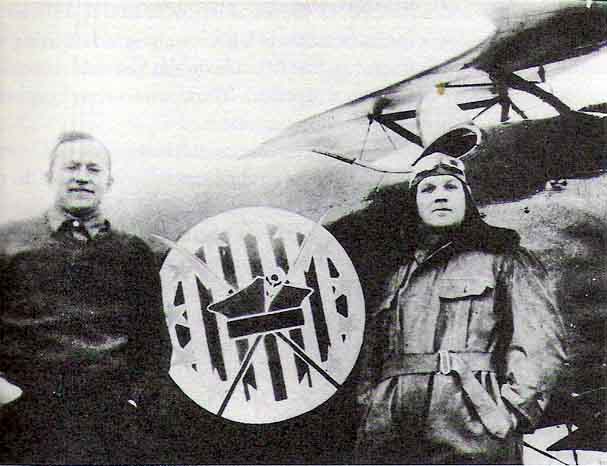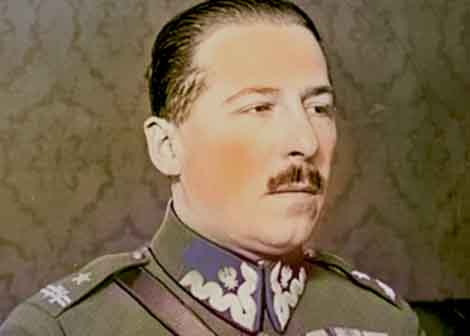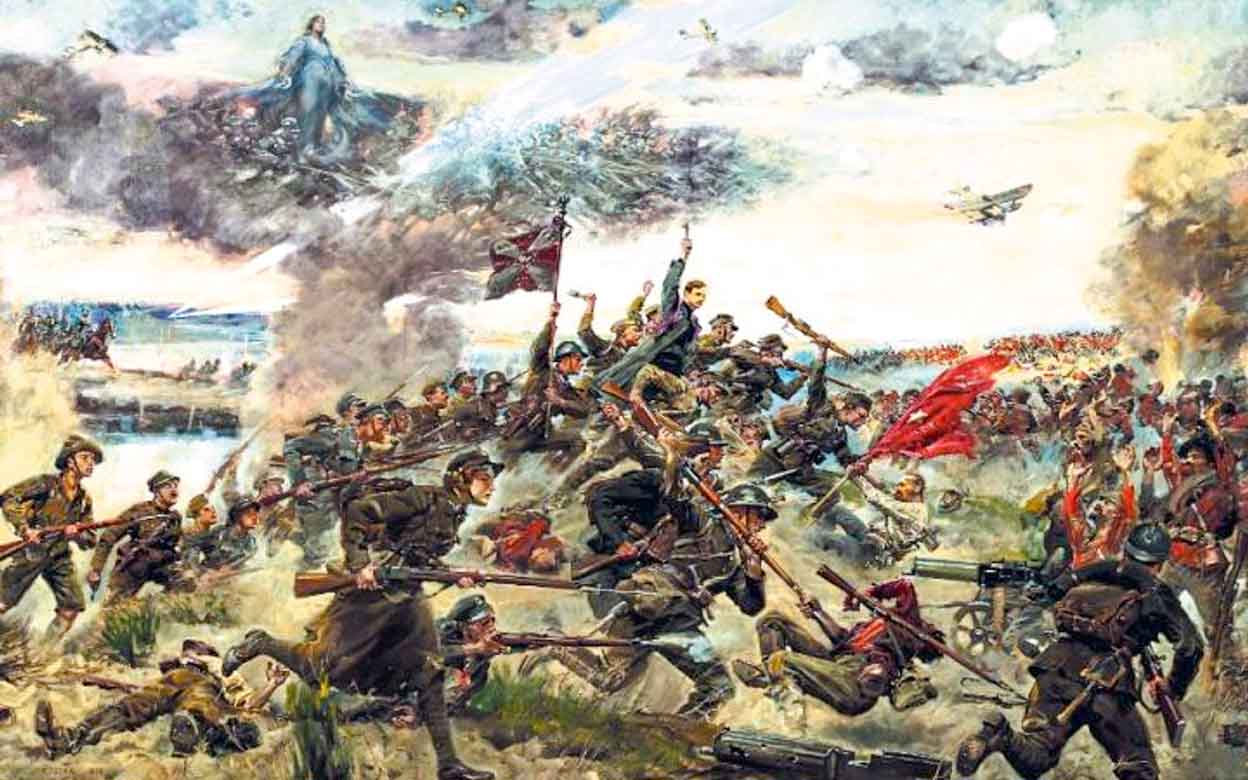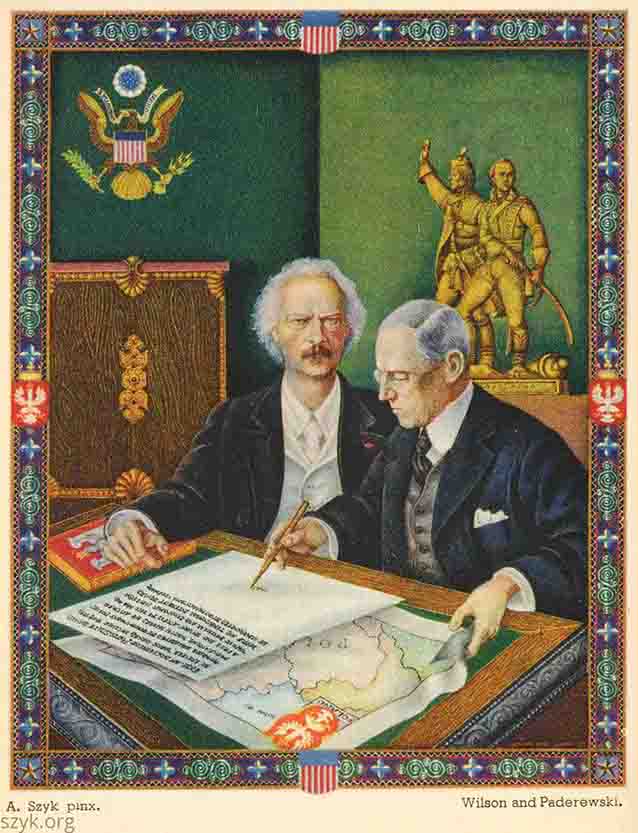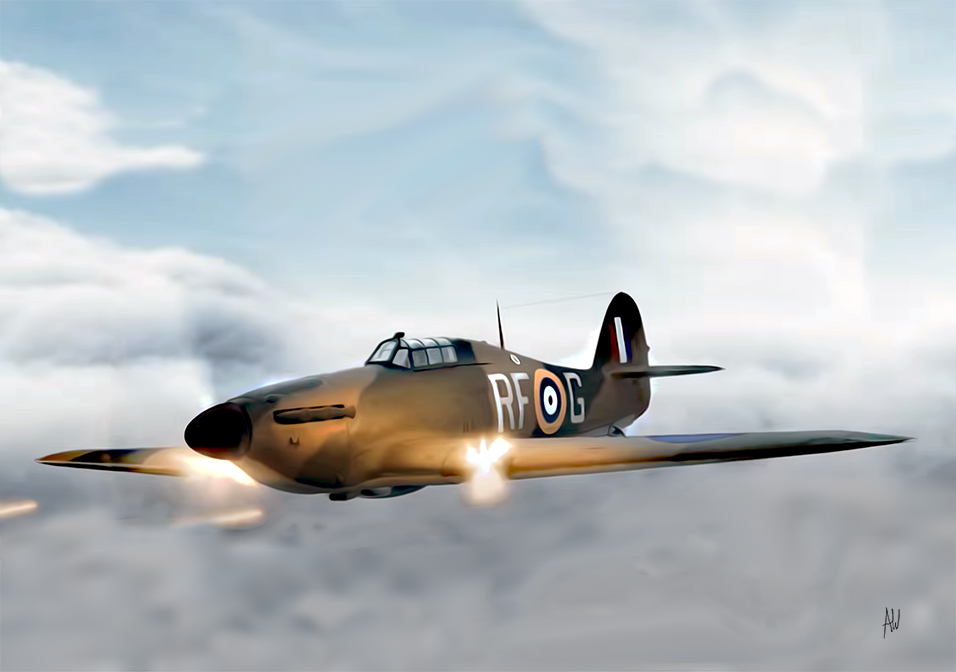The recently celebrated 100th anniversary of the victory over Bolshevik Russia in 1920, among others, became an opportunity to recall the extraordinary history of the Kościuszko Squadron, created in 1919 by American airmen fighting alongside Poles in the war with the Bolsheviks.
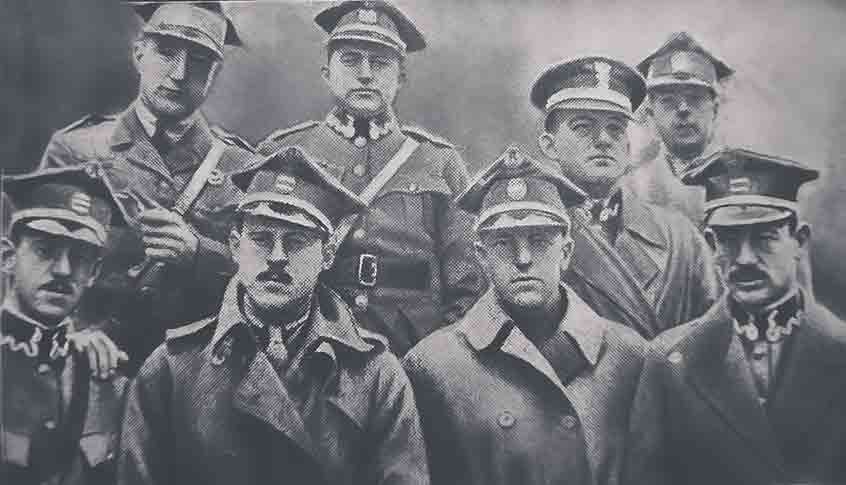
The 7th Fighter Squadron — the first American volunteers: Fauntleroy, Cooper, Corsi, Crawford, Shrewsbury, Clark, Rorison, Noble (Source: Wikipedia)
The Americans who formed the Kościuszko Squadron did not have any Polish roots. They wanted to pay off the honor debt that, in their opinion, America incurred to Poland in connection with the participation of Polish volunteers, including Tadeusz Kościuszko and Kazimierz Pulaski, in the fight for the independence of the United States.
The same idea, to create an air squadron, arose in the minds of two American officers: Captain Merian C. Cooper, and Major Cedric Fauntleroy (Faunt Le Roy). This idea materialized in Paris, in an American military casino, on the National Day of France on July 14, 1919.
The eyes of the world at that time were focused on Paris. The Versailles Peace Conference was held there (from January 18, 1919, to January 21, 1920). It was the time of ratification of the Versailles Peace Treaty signed on June 28, 1919. At that time, the headquarters of the American Expeditionary Force in Europe (AEF) under the command of General John Pershing was located in Paris. The demobilization of US troops in Europe continued, and American boys from the Great War returned home.
The commander of the Polish Military Mission in Paris, General Tadeusz Rozwadowski, who knew Captain Cooper from Lviv — about which, in a moment — enthusiastically supported the project of creating an American voluntary aviation unit serving in the Polish Army and made his office available for organizational purposes. Support was also provided by the then Prime Minister, Ignacy Jan Paderewski, who welcomed American volunteers at the Ritz Hotel in Paris. The Americans appeared dressed in Polish blue uniforms of Haller's army.
The first American volunteer pilots reached Lviv on October 17, 1919, where the ceremony of handing over the command over the 7th Air Squadron, re-based from Krakow to Lviv, by Lieutenant Ludomil Rayski to Major Cedric Fauntleroy took place. The squadron was then renamed the Kościuszko Squadron.
The first commander of the Kościuszko Squadron was Major Cedric Errol Fauntleroy, and Captain Merian C. Cooper became his deputy. American volunteers retained military ranks from the American army, but fought in Polish uniforms and received the pay of Polish officers, and the difference was significant because a Polish officer at that time received his pay of around $7, and an American at that time was paid $35.
Merian Cooper and Cedric Fauntleroy
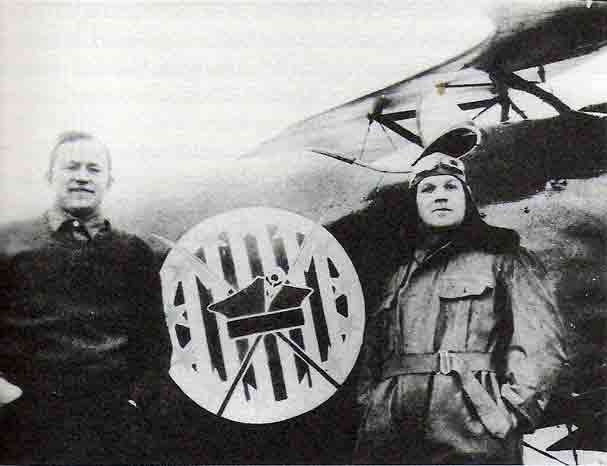
Merian Cooper and Cedric Fauntleroy (Source: Wikipedia)
Merian Cooper knew Lviv from his earlier stay. At the end of the Great War, he was shot down during a combat operation behind the front line and, with burned hands, was taken prisoner by the Germans. After returning from captivity, he volunteered to work for the American Relief Administration, headed by the later President of the United States, Herbert Hoover. On behalf of this organization, he was sent to Lviv with the transport of humanitarian aid, food and medicine. Under such circumstances, he met General Rozwadowski.
There were fights in Lviv at that time and Merian Copper saw with his own eyes the heroism of women and children fighting for their city. It made a colossal impression on him. Merian's great-great-grandfather, Colonel John Cooper transported mortally wounded Kazimierz Pulaski from the battlefield near Savannach, who had been looked after by the colonel's daughters before his death. From childhood, Merian Cooper knew the family message that Poles are brave, courageous, do not let go, and now he saw with his own eyes the confirmation of this message. Therefore, he decided to pay off the debt of honor.
American airmen flying in the Kościuszko Squadron fought with bravado. During the Kiev expedition, they raised the morale of the Polish soldier by flying low over the columns of the Polish army heading east. They attacked stations, trains, sunk a military transport on the River Dnieper. It was they who warned the Polish General Staff against Budyonny's cavalry approaching from a direction from which no one had expected it, and then they covered the retreat of the Polish troops. Like angels of death, they circled over Budyonny's Cavalry Army, inflicting heavy losses on it. When the ammunition ran out, the wheels of the planes knocked the Cossacks off their saddles.
It should be remembered that those planes had open cabins, no radio stations, and in order to transmit the report, it was necessary to land near the headquarters and then provide the information. Bombs were thrown from the cabin "by eye" after arming the load on ones own knees, and when the synchronization mechanism was damaged, the machine gun was able to shoot off the tips off its own propeller.
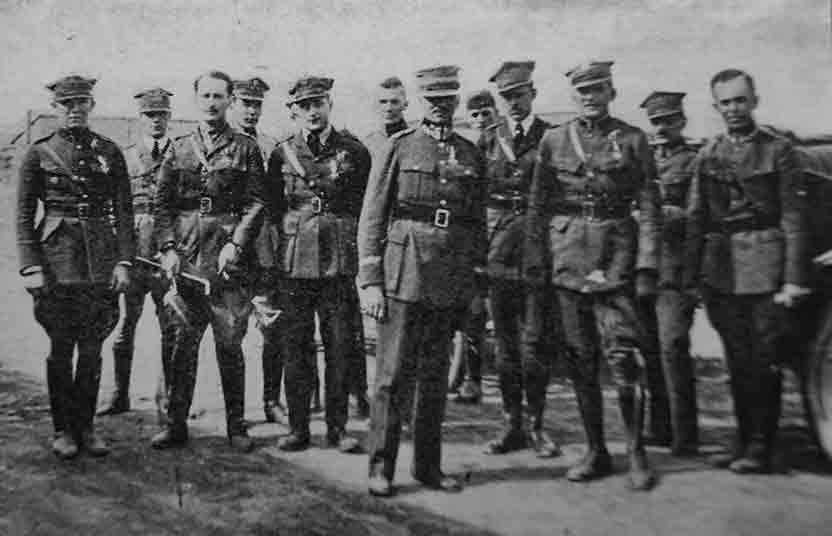
The 7th Fighter Squadron after having been decorated by Gen. Haller in 1920 (Source: Wikipedia)
On July 13, 1920, Merian Cooper was shot down behind the front lines and was taken into Soviet captivity. What saved him from being shot on the spot was the fact that he was wearing an American surplus uniform signed with a foreign name, and his burned hands looked like the hands of a worker, not an officer. After a few months of captivity, Merian Cooper escaped from the camp near Moscow, accompanied by two Polish officers, and after 900 kilometers on foot, he returned to Warsaw via Latvia.
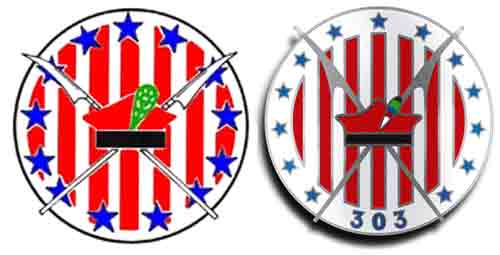
The emblems (roundels) of the 7th fighter squadron and squadron 303 (Source: Wikipedia)
After the outbreak of World War II, the emblem and traditions of the 7th Kościuszko Squadron (renamed as 111th Squadron) were taken over by the most famous Polish 303 (Warsaw) Fighter Squadron Tadeusz Kościuszko. Merian Cooper visited Squadron 303 on March 14, 1941.
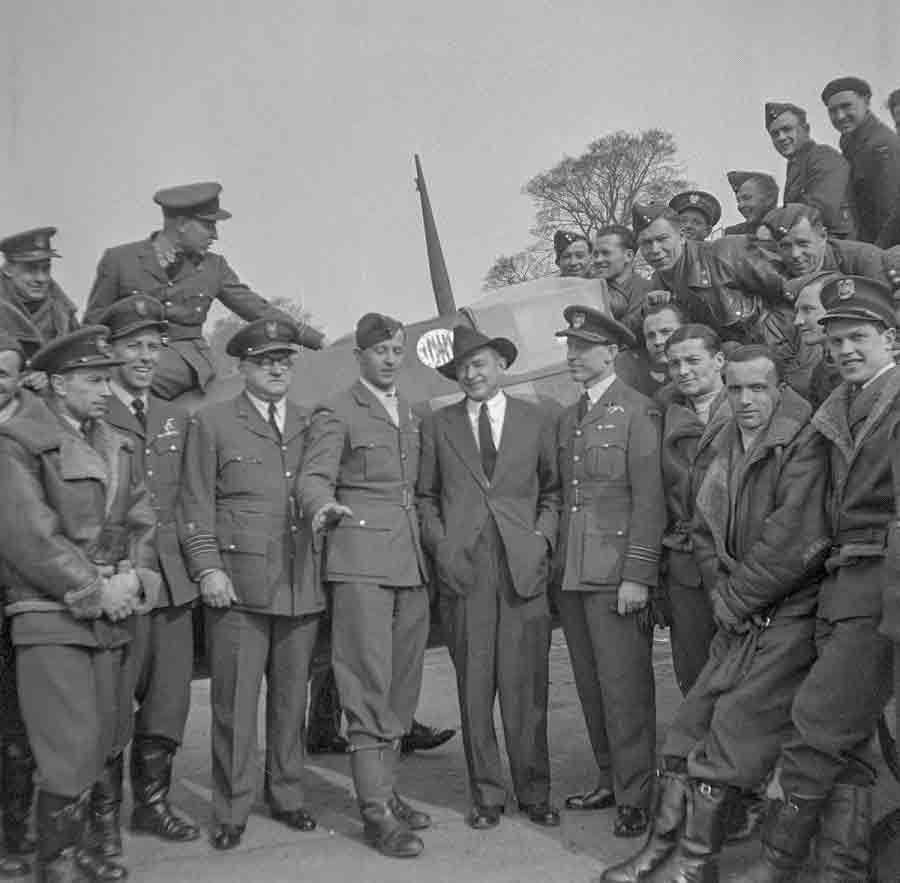
Merian C. Cooper visiting 303 Squadron (Source: Wikipedia)
In the interwar period, Merian Cooper was a film director and producer, and his greatest and most famous film was King Kong in 1933, in which he personally starred killing the giant ape at the top of the Empire State Building with a series of rifle shots from an airplane. He produced 62 films, including Rio Grande, The Quiet Man, She Wore a Yellow Ribbon, and The Searchers. In 1953, Merian Cooper received an honorary Oscar at the 25th Academy Awards.
The Unwritten Final Chapter
Merian C. Cooper died in 1973 at the age of 79. His ashes were scattered over the ocean. Until the end of his long and colorful life, he remained a friend of Poland and Poles.
After returning to the USA, Cedric E. Fauntleroy collaborated for Poland with Ignacy Paderewski and the Polish community. He was one of the founders of the Kościuszko Foundation in New York. He died in 1963 and rests in the Presbytery Church Cemetery in Pine Ridge, Mississippi, USA.
Below I present a photo of the grave of the commander of the Kościuszko Squadron from the war of 1920 with the Bolsheviks. The photo was taken in September 2020. This is the smallest grave, the first one from the right. In a close-up you can see a red and white flower ribbon.

Author's archives.
Looking at the poverty and neglect of Cedric Fauntleroy's grave, I believe that the first commander of the Kościuszko Squadron in 1920 deserves much more. In my opinion, we, Poles, now have an honorary debt to this war hero.
I tried to collect funds for the monument to the grave of Polish Army Colonel Cedric E. Fauntleroy on the website zrzutka.pl, but it didn't work that way, because the effects were meager. The chances of success are poor without media support.
Now, let our imaginations run wild and ask ourselves a few questions:
- Is it a problem to raise money to fund a Cedric Fauntleroy statue - either at the grave or at the Pine Ridge Cemetery? Seems like none.
- Is it a problem for any Polish organization to apply to the President of the Republic of Poland for the posthumous general rank of Cedric E. Fauntleroy? Also, I don't see any reasons why it might not work.
- Is it possible to fund a monument for two 1920s Kościuszko Squadron Commanders (Cooper and Fauntleroy) either at West Point or at the US Aviation Academy? It would require the cooperation of Polish diaspora organizations, the Polish Government and the Polish Embassy in the USA - but it is not an impossible thing.
Is it possible for the Republic of Poland to fund a serious memorial for all American pilots of the Kościuszko Squadron from 1920 at the Arlington Cemetery? It will not be that simple, but Americans - as far as I know - appreciate it when other nations show respect and gratitude to American boys. There is a chance that such an action may be successful.
And when such a monument is erected, the Americans themselves will have no doubts that there is a centuries-old Polish-American alliance. As times are difficult, I would prefer the superpower to believe deeply and sincerely in such an alliance.
Translated from Polish by Andrew Woźniewicz.




